✅ Author Profile: A research enthusiast and Matlab simulation developer, skilled in data processing, modeling simulation, program design, complete code acquisition, paper reproduction, and scientific simulation.
🍎 Previous Review: Follow the personal homepage:Matlab Research Studio
🍊 Personal Motto: Investigate to gain knowledge, complete Matlab code and simulation consultation available via private message.
🔥 Content Introduction
Wireless Sensor Networks (WSN) are self-organizing networks composed of numerous low-power, low-cost micro-sensor nodes with sensing, computing, and communication capabilities. They are widely used in fields such as environmental monitoring, smart agriculture, smart cities, industrial automation, and health monitoring. Due to the high cost of actual WSN deployment and the difficulty in controlling experimental conditions, simulation has become a key method for researching WSNs. This article aims to explore the current state of research on simulating wireless sensor networks, the challenges faced, and future development directions.
1. The Significance and Role of Simulating Wireless Sensor Networks
Simulation plays a crucial role in WSN research, and its importance is reflected in several aspects:
- Reducing Research Costs: Deploying large-scale WSNs in reality requires substantial hardware, human resources, and maintenance costs. A simulated environment can effectively reduce costs, allowing researchers to conduct experiments in a virtual environment without the need to purchase and deploy hardware.
- Improving Research Efficiency: A simulated environment can accelerate the algorithm development and testing process. Researchers can quickly iterate different protocols and algorithms in a simulated environment, evaluate their performance, and optimize them.
- Controllable Experimental Environment: A simulated environment allows precise control over experimental parameters, such as node density, channel models, and energy consumption models, ensuring the repeatability and comparability of experiments. This is crucial for evaluating the performance of different algorithms under specific conditions.
- Large-Scale Network Simulation: A simulated environment can easily simulate large-scale WSNs, which is difficult to achieve in actual deployments. Large-scale simulations help study the scalability, robustness, and distributed characteristics of WSNs.
- Early Assessment and Risk Mitigation: Before actual deployment, simulation can assess the performance and reliability of WSNs in advance, identifying potential problems and risks, thereby reducing the risk of deployment failure.
2. Current State of Research on Simulating Wireless Sensor Networks
Currently, there are various mature WSN simulators, which can be roughly divided into the following categories:
- Event-Driven Simulators: These simulators simulate the behavior of WSNs through discrete event simulation. Examples include NS-3, OMNeT++, and QualNet. They typically provide a rich library of network protocols and detailed channel models, capable of simulating various network scenarios. NS-3 is known for its modular design and powerful simulation capabilities, while OMNeT++ is renowned for its component-based architecture and flexible extensibility. QualNet is a commercial simulator that offers comprehensive network simulation features but requires a paid license.
- Node-Level Simulators: These simulators focus more on the internal behavior of individual sensor nodes, such as TinyOS and COOJA. They are usually closely integrated with specific operating systems and hardware platforms, capable of simulating the hardware characteristics and software behavior of nodes. The TinyOS simulator allows researchers to test TinyOS applications in a virtual environment, while COOJA is specifically designed for the Contiki operating system.
- Hybrid Simulators: These simulators combine the advantages of event-driven simulation and node-level simulation, such as TOSSIM and EmStar. They can simulate network behavior at a macro level while also simulating individual node behavior at a micro level. TOSSIM can simulate the operation of TinyOS applications and provides visualization tools to observe node behavior.
- Domain-Specific Simulators: These simulators focus on WSN simulation in specific application domains, such as Castalia for wireless body area networks (WBAN) simulation and SUMO for traffic flow simulation. They typically provide models and tools specific to the domain to facilitate related research.
In addition to simulators, there are several important research directions worth noting:
- Research on Channel Models: Accurate channel models are crucial for simulating the performance of WSNs. Researchers have proposed various channel models, such as free space models, Rayleigh fading models, and shadow fading models. However, actual wireless channels are more complex and require more refined channel models to improve simulation accuracy.
- Research on Energy Consumption Models: WSN nodes have limited energy, so energy consumption models are vital for simulating the lifecycle of WSNs. Researchers have proposed various energy consumption models, such as CPU state-based energy consumption models and communication state-based energy consumption models.
- Optimization of Large-Scale Network Simulation: Simulating large-scale WSNs requires substantial computational resources. Researchers have proposed various optimization techniques, such as parallel simulation and distributed simulation, to improve the efficiency of large-scale network simulations.
- Validation of Simulation Results: Simulation results need to be validated against actual experimental results to ensure the accuracy and reliability of the simulation. Researchers can use actual deployed WSNs to validate simulation results and adjust simulation parameters based on experimental outcomes.
3. Challenges Faced in Simulating Wireless Sensor Networks
Despite the important role of simulation in WSN research, it also faces several challenges:
- Complexity of Simulation: The behavior of WSNs is influenced by various factors, such as node density, channel models, energy consumption models, and network topology. Accurately simulating these factors requires complex models and algorithms, increasing the difficulty of simulation.
- Scalability Issues: Simulating large-scale WSNs requires substantial computational resources. As the network scale increases, the complexity of the simulation can grow exponentially, leading to excessively long simulation times.
- Accuracy of Channel Models: Actual wireless channels are very complex and influenced by various factors, such as multipath effects, shadow fading, and interference. Existing channel models struggle to accurately simulate these factors, leading to discrepancies between simulation results and actual conditions.
- Accuracy of Energy Consumption Models: The energy consumption of WSN nodes is influenced by various factors, such as CPU state, communication state, and sensor state. Existing energy consumption models find it challenging to accurately simulate these factors, resulting in discrepancies between simulation results and actual conditions.
- Difficulty in Validating Simulation Results: Validating simulation results against actual experimental results is a challenging task. The cost of deploying actual WSNs is high, and controlling experimental conditions is difficult.
4. Future Development Directions
To overcome the aforementioned challenges, future research on simulating wireless sensor networks needs to focus on the following aspects:
- Developing More Refined Channel Models: There is a need to develop more refined channel models that consider more real-world factors, such as multipath effects, shadow fading, and interference, to improve simulation accuracy. Machine learning techniques can be used to learn real channel characteristics and construct more realistic channel models.
- Developing More Accurate Energy Consumption Models: There is a need to develop more accurate energy consumption models that consider more influencing factors, such as CPU state, communication state, and sensor state, to improve simulation accuracy. Actual node hardware can be used for testing, and energy consumption models can be adjusted based on test results.
- Optimizing Large-Scale Network Simulation Techniques: Further optimization of large-scale network simulation techniques is needed, such as parallel simulation, distributed simulation, and hierarchical simulation, to improve the efficiency of large-scale network simulations. Cloud computing platforms can be utilized to provide computational resources to support large-scale network simulations.
- Developing Hybrid Simulation Technologies: Combining the advantages of event-driven simulation and node-level simulation, hybrid simulation technologies should be developed to simulate network behavior at a macro level while also simulating individual node behavior at a micro level. Hardware-in-the-loop simulation techniques can be used to connect actual node hardware with the simulation environment for hybrid simulation.
- Strengthening Validation of Simulation Results: There is a need to strengthen the validation of simulation results by comparing them with actual experimental results to ensure the accuracy and reliability of the simulation. Open-source hardware platforms and low-cost sensor nodes can be utilized to build small WSN testbeds for validating simulation results.
- Promoting Standardization and Interoperability: Promoting the standardization and interoperability of WSN simulators so that different simulators can share models and data, improving research efficiency. A unified simulation interface and data format can be developed to ensure compatibility between different simulators.
- Utilizing Artificial Intelligence Technologies: Utilizing artificial intelligence technologies, such as machine learning and deep learning, to enhance the intelligence of simulations. Machine learning algorithms can be used to automatically adjust simulation parameters and optimize simulation results. Deep learning models can be used to predict the performance of WSNs, accelerating the algorithm development and testing process.
5. Conclusion
Research on simulating wireless sensor networks is an important component of WSN research, which can reduce research costs, improve research efficiency, and provide a controllable experimental environment. Although simulation faces challenges such as complexity, scalability issues, and accuracy of channel models, future WSN simulation research will make greater progress by developing more refined channel models, optimizing large-scale network simulation techniques, developing hybrid simulation technologies, strengthening validation of simulation results, and utilizing artificial intelligence technologies. This will contribute to the development and application of WSN technology, helping to build a more intelligent, efficient, and sustainable society.
⛳️ Simulation Results
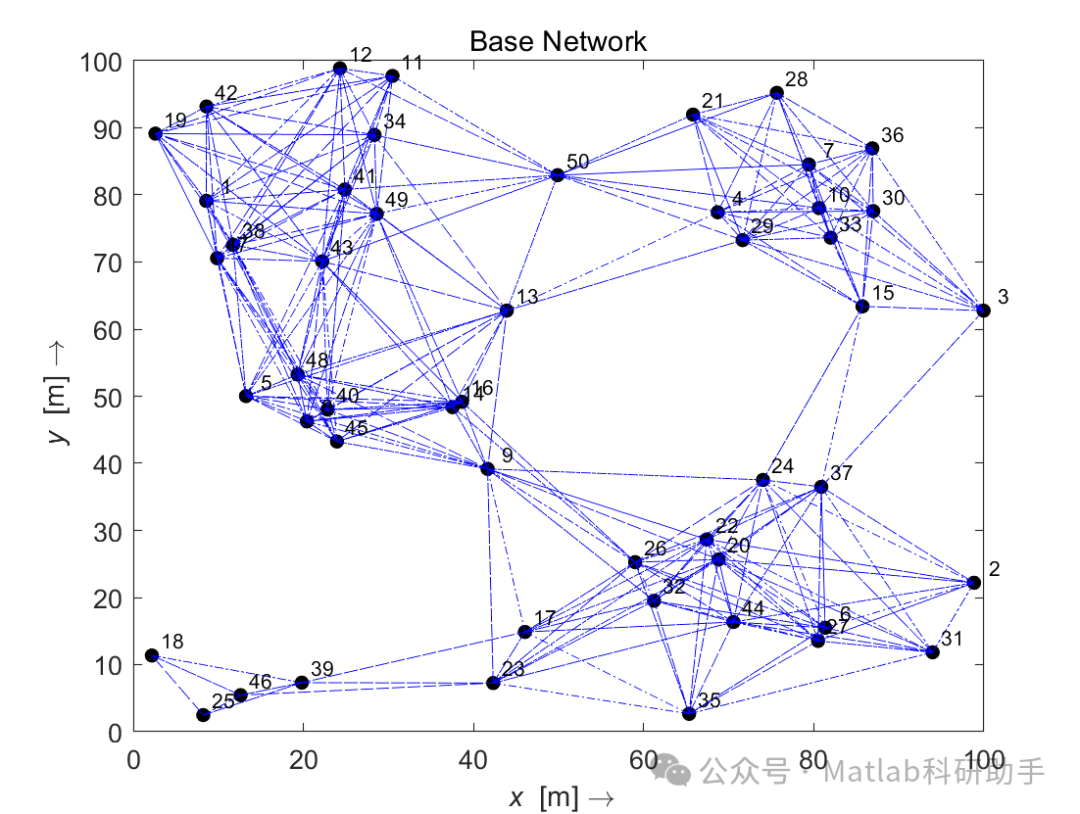
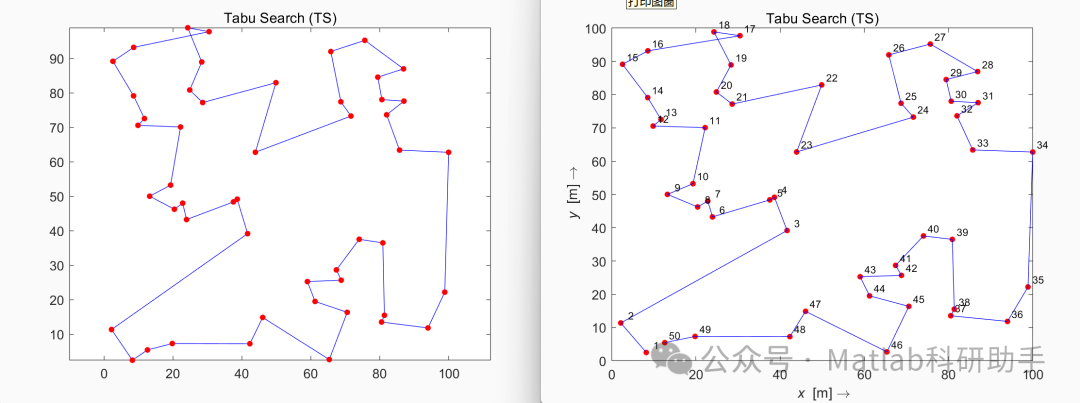
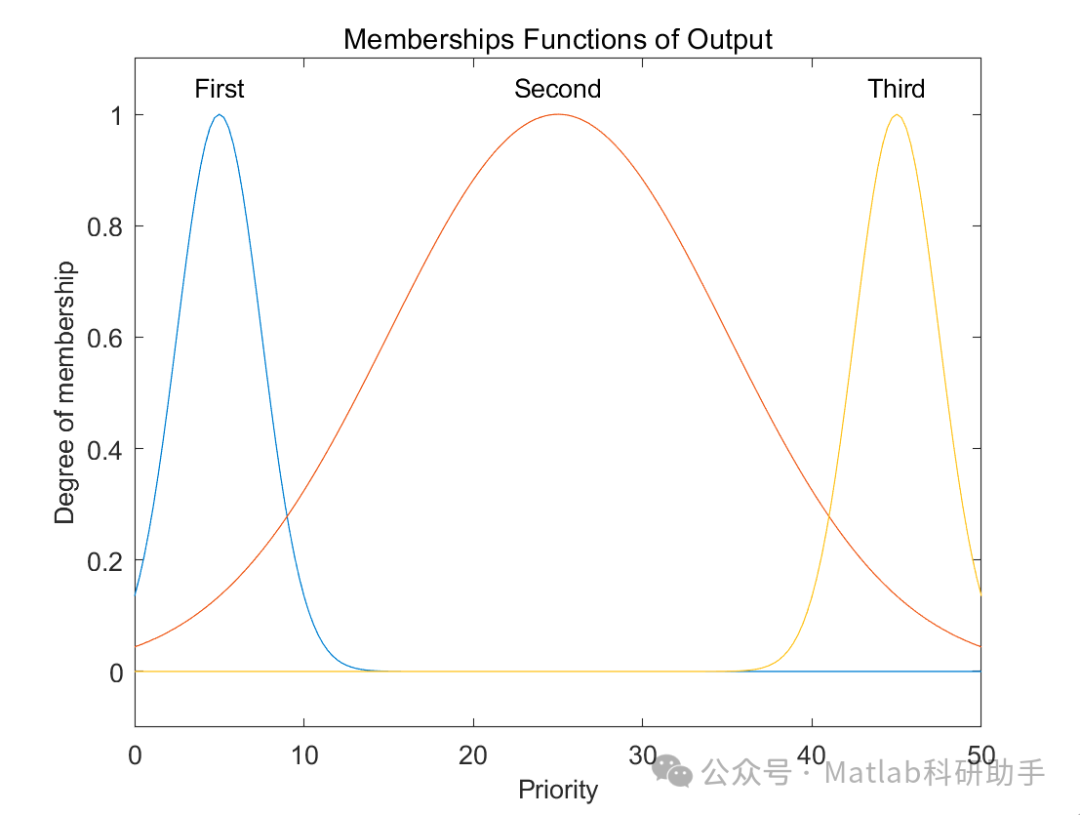
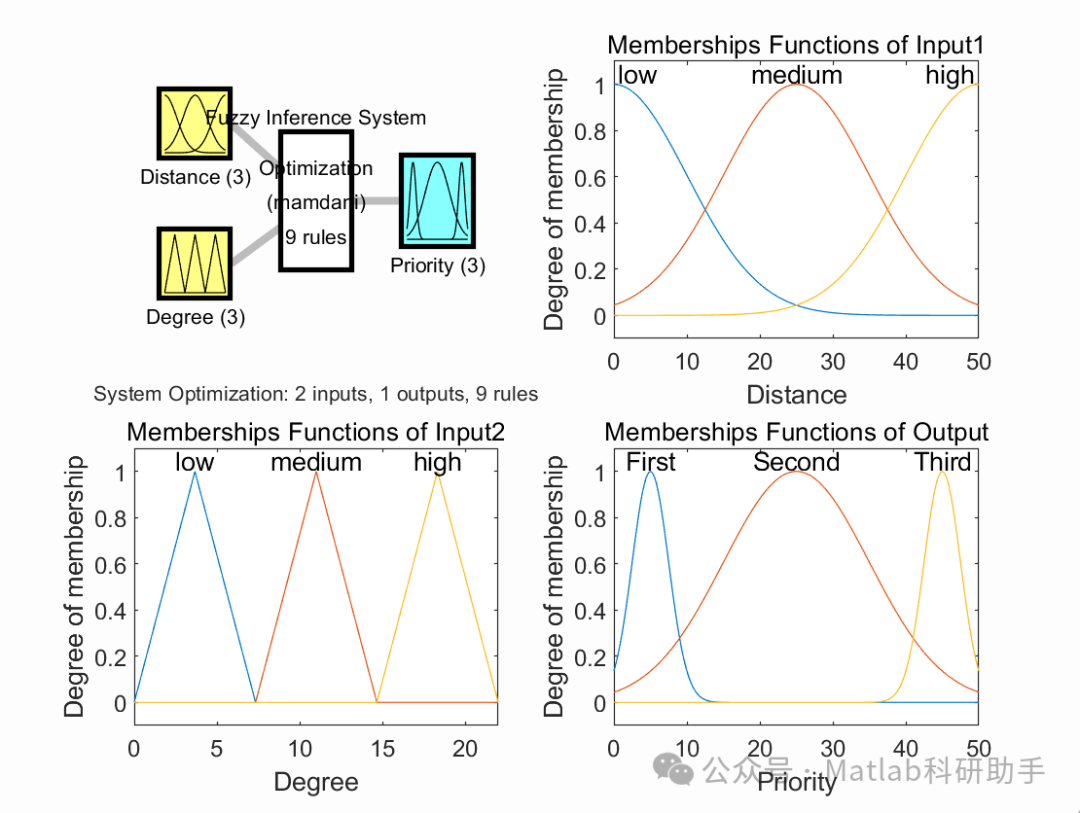
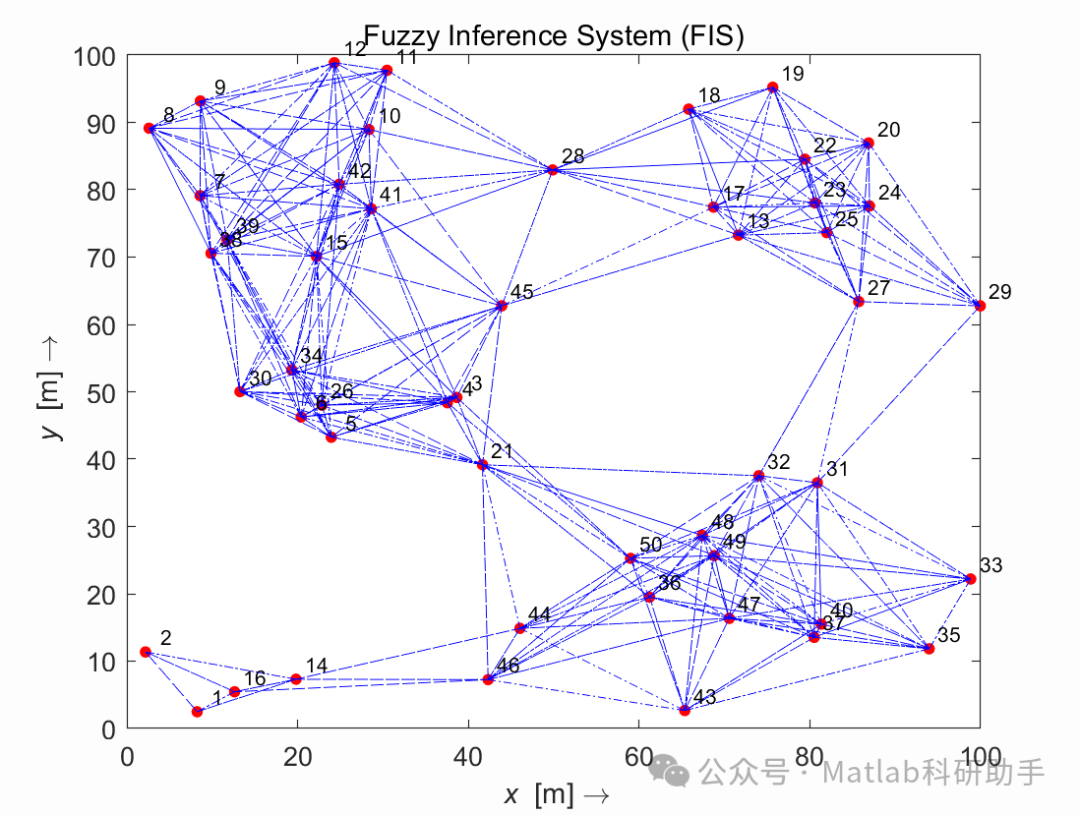
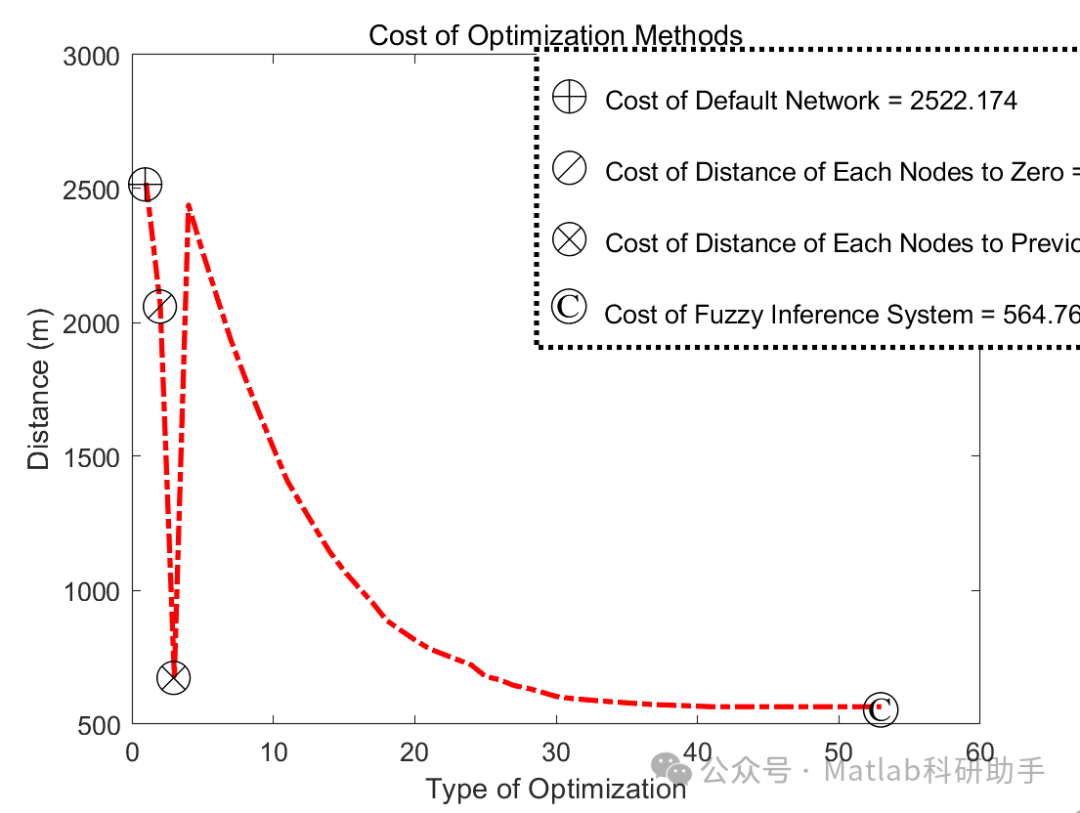
🔗 References
[1] Deng Wenlian. Simulation Research on Node Localization in Wireless Sensor Networks [J]. Computer Simulation, 2012. DOI: CNKI:SUN:JSJZ.0.2012-05-040.
[2] Zhang Min. Research on Clustering Routing Protocols in Wireless Sensor Networks [D]. Yantai University [2025-04-13]. DOI: CNKI:CDMD:2.1017.851693.
[3] Cui Yuanyuan. Research on Node Localization Algorithms in Wireless Sensor Networks [D]. Taiyuan University of Technology, 2013. DOI: 10.7666/d.Y2395930.
📣 Sample Code
🎈 Some theoretical references from network literature, please contact the author for removal if there is any infringement.
👇 Follow me to receive a wealth of Matlab e-books and mathematical modeling materials
🏆 Our team specializes in guiding customized Matlab simulations in various research fields, helping to realize research dreams:
🌈 Various intelligent optimization algorithm improvements and applications
Production scheduling, economic scheduling, assembly line scheduling, charging optimization, workshop scheduling, departure optimization, reservoir scheduling, 3D packing, logistics site selection, cargo location optimization, bus scheduling optimization, charging pile layout optimization, workshop layout optimization, container ship loading optimization, pump combination optimization, medical resource allocation optimization, facility layout optimization, visual domain base station and drone site selection optimization, knapsack problem, wind farm layout, time slot allocation optimization, optimal distributed generation unit allocation, multi-stage pipeline maintenance, factory-center-demand point three-level site selection problem, emergency life material distribution center site selection, base station site selection, road lamp column arrangement, hub node deployment, transmission line typhoon monitoring devices, container scheduling, unit optimization, investment optimization portfolio, cloud server combination optimization, antenna linear array distribution optimization, CVRP problem, VRPPD problem, multi-center VRP problem, multi-layer network VRP problem, multi-center multi-vehicle VRP problem, dynamic VRP problem, two-layer vehicle routing planning (2E-VRP), electric vehicle routing planning (EVRP), hybrid vehicle routing planning, mixed flow shop problem, order splitting scheduling problem, bus scheduling optimization problem, flight shuttle vehicle scheduling problem, site selection path planning problem, port scheduling, port bridge scheduling, parking space allocation, airport flight scheduling, leak source localization
🌈 Time series, regression, classification, clustering, and dimensionality reduction in machine learning and deep learning
2.1 BP time series, regression prediction, and classification
2.2 ENS voice neural network time series, regression prediction, and classification
2.3 SVM/CNN-SVM/LSSVM/RVM support vector machine series time series, regression prediction, and classification
2.4 CNN|TCN|GCN convolutional neural network series time series, regression prediction, and classification
2.5 ELM/KELM/RELM/DELM extreme learning machine series time series, regression prediction, and classification
2.6 GRU/Bi-GRU/CNN-GRU/CNN-BiGRU gated neural network time series, regression prediction, and classification
2.7 Elman recurrent neural network time series, regression prediction, and classification
2.8 LSTM/BiLSTM/CNN-LSTM/CNN-BiLSTM long short-term memory neural network series time series, regression prediction, and classification
2.9 RBF radial basis function neural network time series, regression prediction, and classification
2.10 DBN deep belief network time series, regression prediction, and classification
2.11 FNN fuzzy neural network time series, regression prediction
2.12 RF random forest time series, regression prediction, and classification
2.13 BLS broad learning system time series, regression prediction, and classification
2.14 PNN pulse neural network classification
2.15 Fuzzy wavelet neural network prediction and classification
2.16 Time series, regression prediction, and classification
2.17 Time series, regression prediction, and classification
2.18 XGBOOST ensemble learning time series, regression prediction, and classification
2.19 Transform various combinations of time series, regression prediction, and classification
Directions cover wind power prediction, photovoltaic prediction, battery life prediction, radiation source identification, traffic flow prediction, load forecasting, stock price prediction, PM2.5 concentration prediction, battery health status prediction, electricity consumption prediction, water body optical parameter inversion, NLOS signal identification, precise prediction of subway stops, transformer fault diagnosis
🌈 In image processing
Image recognition, image segmentation, image detection, image hiding, image registration, image stitching, image fusion, image enhancement, image compressed sensing
🌈 In path planning
Traveling salesman problem (TSP), vehicle routing problem (VRP, MVRP, CVRP, VRPTW, etc.), 3D path planning for drones, drone collaboration, drone formation, robot path planning, grid map path planning, multimodal transport problems, electric vehicle routing planning (EVRP), two-layer vehicle routing planning (2E-VRP), hybrid vehicle routing planning, ship trajectory planning, full path planning, warehouse patrol
🌈 In drone applications
Drone path planning, drone control, drone formation, drone collaboration, drone task allocation, drone secure communication trajectory online optimization, vehicle collaborative drone path planning
🌈 In communication
Sensor deployment optimization, communication protocol optimization, routing optimization, target localization optimization, Dv-Hop localization optimization, Leach protocol optimization, WSN coverage optimization, multicast optimization, RSSI localization optimization, underwater communication, communication upload and download allocation
🌈 In signal processing
Signal recognition, signal encryption, signal denoising, signal enhancement, radar signal processing, signal watermark embedding and extraction, electromyography signals, electroencephalography signals, signal timing optimization, electrocardiogram signals, DOA estimation, encoding and decoding, variational mode decomposition, pipeline leakage, filters, digital signal processing + transmission + analysis + denoising, digital signal modulation, bit error rate, signal estimation, DTMF, signal detection
🌈 In power systems
Microgrid optimization, reactive power optimization, distribution network reconstruction, energy storage configuration, orderly charging, MPPT optimization, household electricity
🌈 In cellular automata
Traffic flow, crowd evacuation, virus spread, crystal growth, metal corrosion
🌈 In radar
Kalman filter tracking, trajectory association, trajectory fusion, SOC estimation, array optimization, NLOS identification
🌈 In workshop scheduling
Zero-wait flow shop scheduling problem (NWFSP), Permutation flow shop scheduling problem (PFSP), Hybrid flow shop scheduling problem (HFSP), zero idle flow shop scheduling problem (NIFSP), distributed permutation flow shop scheduling problem (DPFSP), blocking flow shop scheduling problem (BFSP)
👇